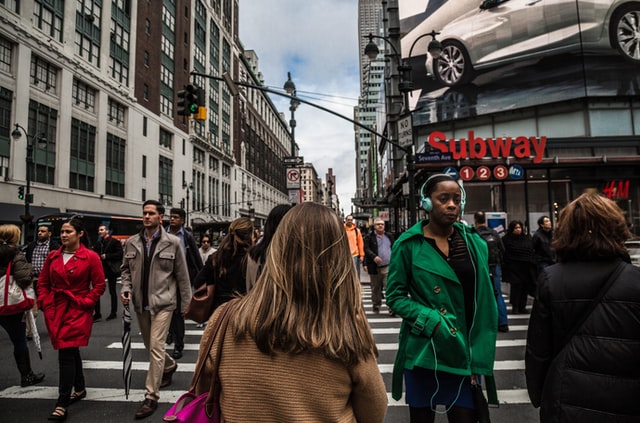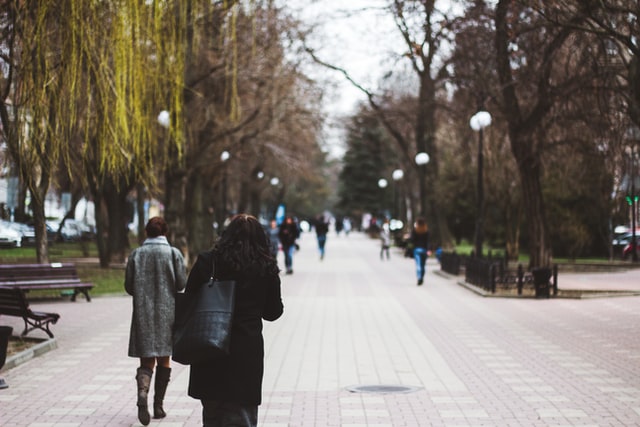A few years ago, I was studying abroad and living a car-free life in Dublin, Ireland. I was lucky to have an apartment that was located within reasonable walking distance of my university and the city center, so on most days, I got around on foot. When I needed to go somewhere further away, I could always hop on the bus or the train. In the year and a half I spent living there, I never felt that I needed a personal vehicle, but when I moved back to the United States, I had no choice but to start driving again.
Although American cities are generally more pedestrian-friendly than the surrounding suburbs, most are still designed around cars. In some, you can find small downtown areas that are pedestrian-only, or you might be able to use designated bike lanes, but for the most part, you still need to own a car if you live in an American city. But some cities might be moving in a different direction, and this change is occurring as a result of the COVID-19 pandemic.

Right now, many states are slowly lifting stay-at-home orders and easing restrictions on the operations of non-essential businesses. While we cannot return to normal just yet, we can resume some activities outside the home, and as the weather gets warmer, people are spending more time outside. Local governments in places like New York City and Washington, D.C. wanted to ensure that people could continue practicing social distancing while leaving their homes and strolling around their cities, so in order to create more space, some have blocked off miles and miles of streets for pedestrians and bikers. And in certain cities, like Seattle, these changes may even be permanent, and the streets will remain off-limits for cars even after the virus is no longer a major concern.
In my own city, there is a discussion about closing off a particular downtown area that gets a lot of foot traffic so that restaurants can set up outdoor dining spaces and people can eat outside while social distancing. The idea has been tossed around for a while now, but it wasn’t until this pandemic that it seemed like this plan could actually become a reality.
Why are American cities so car-centric? It’s partially because “mass motorization” began earlier in the United States: assembly line production systems made cars more affordable, and after World War II, American families had more disposal income compared to other countries, so more households had cars. Urban planners began designing highways, bridges, and intersections around automobile usage. Plus, privately owned mass transit systems struggled financially after World War II, and many of them ended up going out of business.
Environmental activists often encourage people to reduce the amount of time they spend behind the wheel. We tell people that walking, biking, or taking public transportation rather than driving is one of the easiest ways to shrink your personal carbon footprint. Unfortunately, driving less simply isn’t an option for many Americans, even if they live in cities. In order to make this choice realistic, we need to rethink the way our cities are designed. It’s perfectly fine to suggest that people who can walk or bike do so instead of driving, but when there are millions of Americans who simply can’t make that choice in their day-to-day lives, the suggestion rings hollow.

Banning cars from certain city streets is a step in the right direction. By creating more space in cities for pedestrians and bikers, people will be able to safely spend time outdoors as cities “reopen.” But the importance of this change goes beyond the current pandemic. Making cities more walkable is a crucial aspect of creating a more sustainable society.
Many have hoped that somehow, this pandemic would end up being beneficial for the environment since so many people have had to give up commuting, flying, and other activities that result in high carbon emissions. In fact, a new analysis published this week concluded that daily global carbon emissions dropped by 17% because of the coronavirus, falling to a level that hasn’t been seen since 2006. But as restricts begin to lift and we move toward reopening, we can’t naively believe that this temporary reduction will result in long-lasting changes. If we want to make this a reality, we need to be proactive about ensuring that those changes stick. Ensuring that work-from-home stays the norm is one important strategy. (Experts are saying that post-COVID, most employees may get the option to work remotely at least 2 days a week. Think about the carbon reduction!) Alongside that, creating more walkable cities has to become a top priority in rebuilding a climate- and disease-resilient society.
Also by Jane: How To Make Your Small Apartment Cozy For The Quarantine
Get more like this—Sign up for our daily inspirational newsletter for exclusive content!
__
Photo: Unsplash




